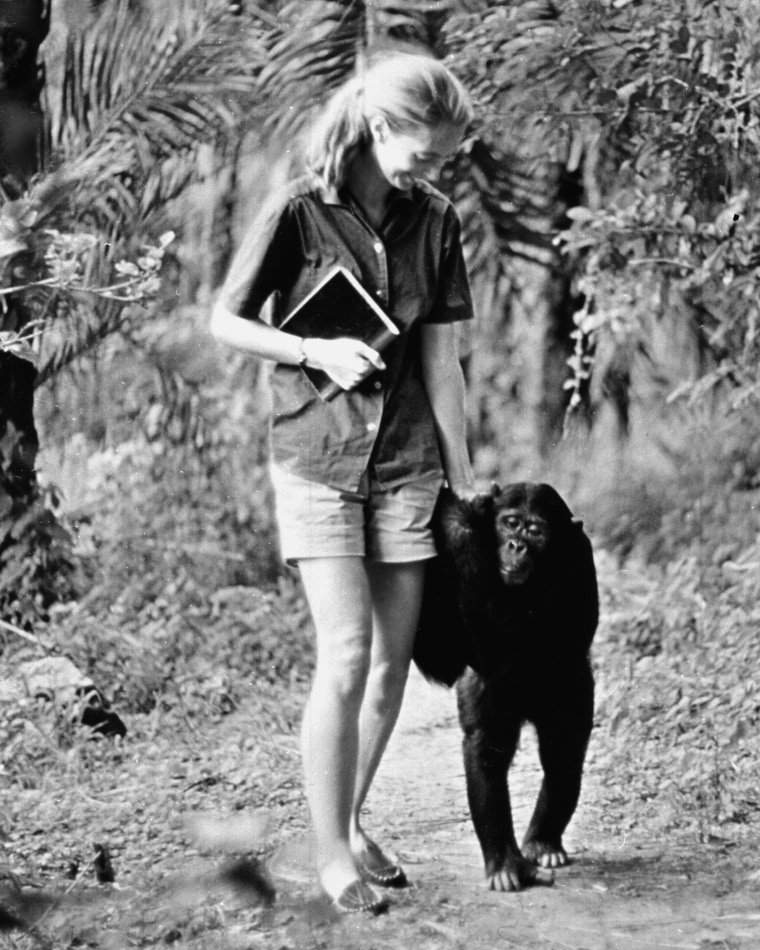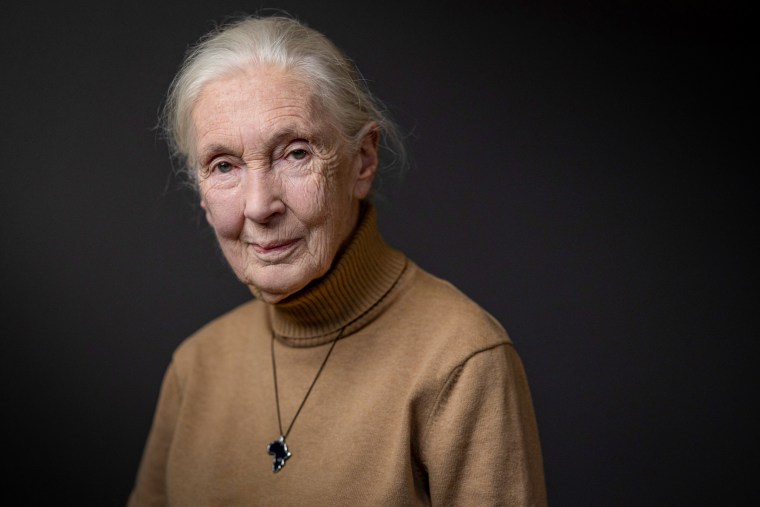Jane Goodall, renowned chimpanzee researcher and animal advocate, dies at 91

Dr. Jane Goodall, a renowned chimpanzee researcher and animal advocate, died Wednesday due to natural causes, the Jane Goodall Institute announced in a statement.
She was 91.
“Dr. Goodall’s discoveries as an ethologist revolutionized science, and she was a tireless advocate for the protection and restoration of our natural world,” the statement said.

Goodall was in California at the time of her death as part of a speaking tour, according to the statement.
She became famous for her work with chimpanzees: Goodall began studying the animals in Tanzania in the 1960s and published some of the first observations of chimps’ use of tools, communication, and complex social structures.
Her work paved the way for decades of field research on primates.
“Her careful, detailed observation and reports really got a whole generation of us — me included — and many others interested in this as a field of scientific endeavor,” said Robert Seyfarth, a professor emeritus at the University of Pennsylvania who studied primate behavior. “Jane’s death marks the end of an era.”
Seyfarth said Goodall was among the first researchers to make close observations of chimpanzees as individuals with personalities and quirks, at a time when other scientists were not trained to observe such specific details.
“Her perceptions of the emotions of chimpanzees was pathbreaking,” he said, adding that Goodall was an “honest chronicler” of the species’ behavior — both of the ways they cared for one another and of their fighting and killing.
“Her agenda was to have people understand chimpanzees in all their complexity,” Seyfarth said.
As her career progressed and Goodall saw how habitat destruction and illegal trafficking threatened the survival of chimpanzees, she made conservation and animal welfare a focus of her work.
As the Jane Goodall Institute, which she founded in 1977, put it, Goodall “went into the forest to study the remarkable lives of chimpanzees — and she came out of the forest to save them.”

Ingrid Newkirk, founder of People for the Ethical Treatment of Animals (PETA), said in a statement that Goodall helped the organization “end the confinement of chimpanzees locked in barren, solid metal chambers for experiments.”
Goodall was 26 when she visited Tanzania for the first time to study chimpanzees. She took an “unorthodox approach” to her research, according to the foundation, “immersing herself in their habitat and their lives to experience their complex society as a neighbor rather than a distant observer.”
In a nearly hour-long interview on the podcast “Call Her Daddy” earlier this year, Goodall told host Alex Cooper that her first expedition to Tanzania was on a shoestring budget funded by a philanthropist.
Goodall had six months of funding, and the first four months were fruitless as the primates were too skittish to allow her to get close enough for observation. But one finally adjusted to her presence long enough for Goodall to make the breakthrough discovery that chimpanzees create and use tools.
“The reason why this was so exciting was because, at that time, it was thought by Western science that only humans used and made tools. We were defined as man, the toolmaker,” Goodall recalled. “And so when I wrote to my mentor, Louis Leakey, he was just so excited.”
That discovery piqued the interest — and funding — of National Geographic and ultimately changed the course of Goodall’s career.
